Kesavina karkali | Colocasia or taro relish

By Leena Hegde, Puttanamane
A classic recipe made by generations, and our monsoon would not be complete without kesavina karkali - a relish or chutney made of colocasia or taro or arbi or arvi plant. This is a seasonal delicacy that we relish with hot rice, where both leaves and stem are used to make the dish.
There are many varieties in colocasia and some tend to get itchy. So it is necessary to add sufficient amount of tamarind to the dish and the dish should be properly cooked.
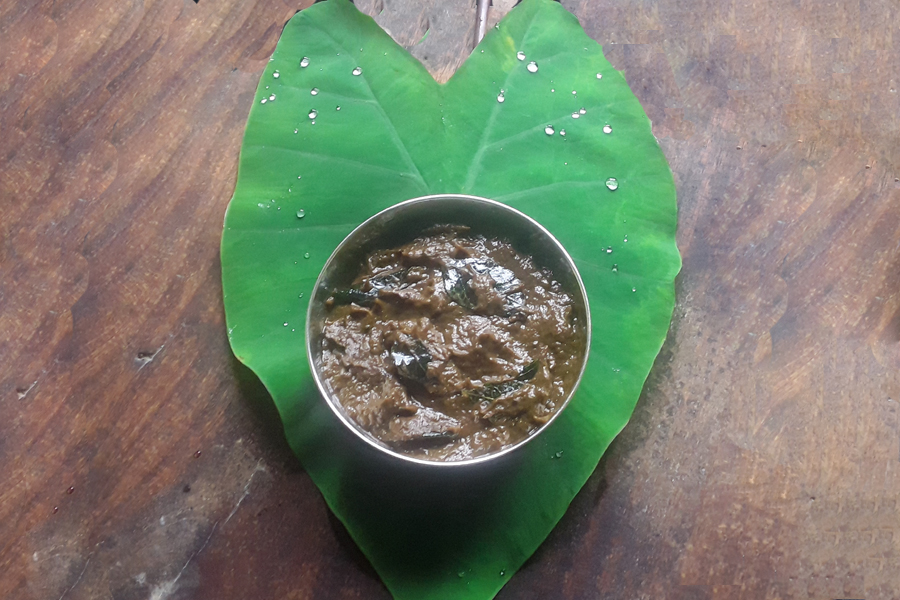
More about Kesa or Colocasia
Kesa or colocasia is an important part of our traditional cuisines. Colocasia species, a member of the Araceae family, has a wide range of variability in its genetic makeup, with both cultivated and wild forms existing. We cultivate a type of colocasia for its edible corms (underground stems / roots) as an irrigated crop throughout the year, and rainfed wild colocasia can be found growing naturally in various settings during monsoon (May-June to Oct-Nov). These wild colocasia are used in various monsoon delicacies like pathrode, karkali, deepavali special tellevu, etc. Cooking the colocasia thoroughly is crucial and raw plant / vegetable cannot be consumed.
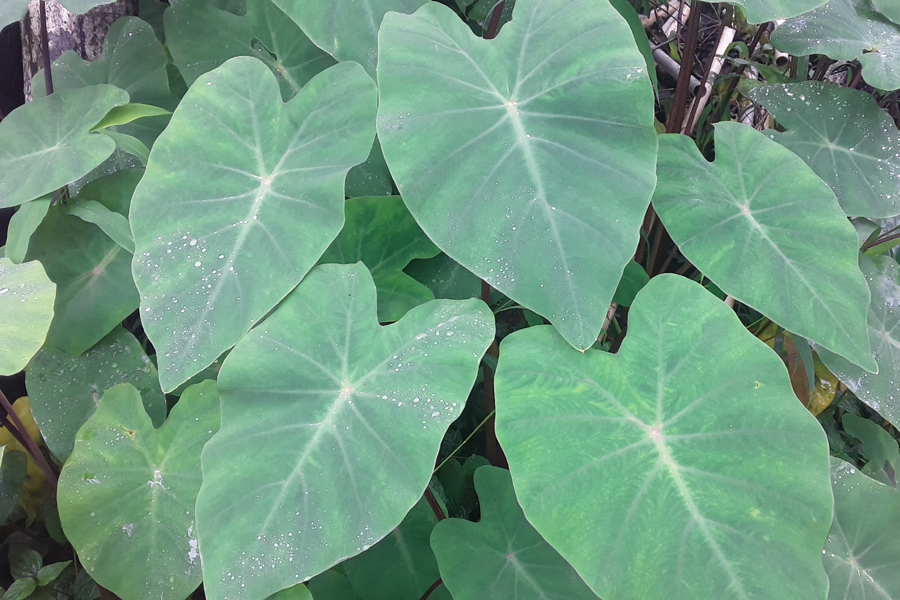

Prep time
20 mins
Cook time
5 mins
Cool off time
0
Total time
25 mins
Course
Curry
Diet
Vegan, Vegetarian
Difficulty level
Easy
Servings
1 cup
Ingredients
-
10 – 12 fresh kesa or colocasia leaves
- 10 – 12 tiny chillies or 4 – 5 green chillies
- 1 – 1.5 teaspoons tamarind
- 8 – 10 garlic cloves
- 8 – 10 curry leaves
- 1 – 1.5 tablespoons coconut or any edible oil
- 1 teaspoon mustard
- 1 pinch turmeric powder
- Salt as required
- Water as required
Cookware / Utensils
-
Pan
- Bowl(s)
- Spoon
- Mixer
Instructions
Instructions
- Clean colocasia leaves. Check for any pests.
- Wash them thoroughly.
- Chop the leaves and stem roughly.
-
Soak them in salt water for about 20 minutes. (Optional)
This is to remove itchiness from colocasia, if any. - Take chopped leaves in a cooking bowl / pan. Add tamarind, and salt as required.
- Add a cup of water or as required. Cook them. Let it cool.
- Now take cooked colocasia in a mixer jar.
- Wash and add tiny / green chillies. Peel garlic cloves, wash and add.
- Grind them into smooth paste. Cover and keep aside.
- Heat 1 – 1.5 tablespoons of oil in a pan.
- Add 1 teaspoon mustard. Let them splutter.
- Then add curry leaves, and a pinch of turmeric powder.
- Add ground colocasia mix. Mix well
- Boil it on medium heat until the mix turns little thick.
- Switch off and relish hot with hot rice.
Step by step guide
How to make Kesavina karkali
1. Clean colocasia leaves. Check for any pests.
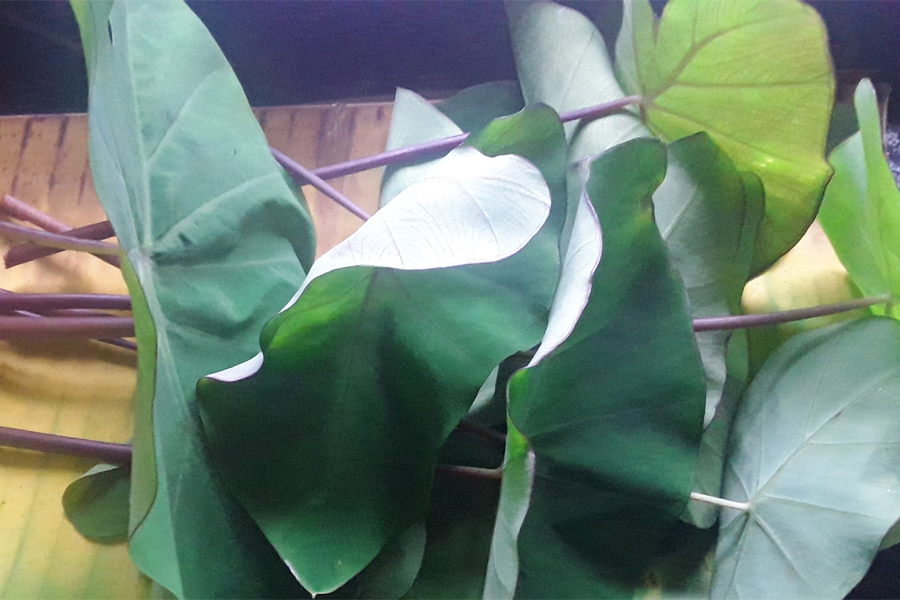
2. Wash them thoroughly.
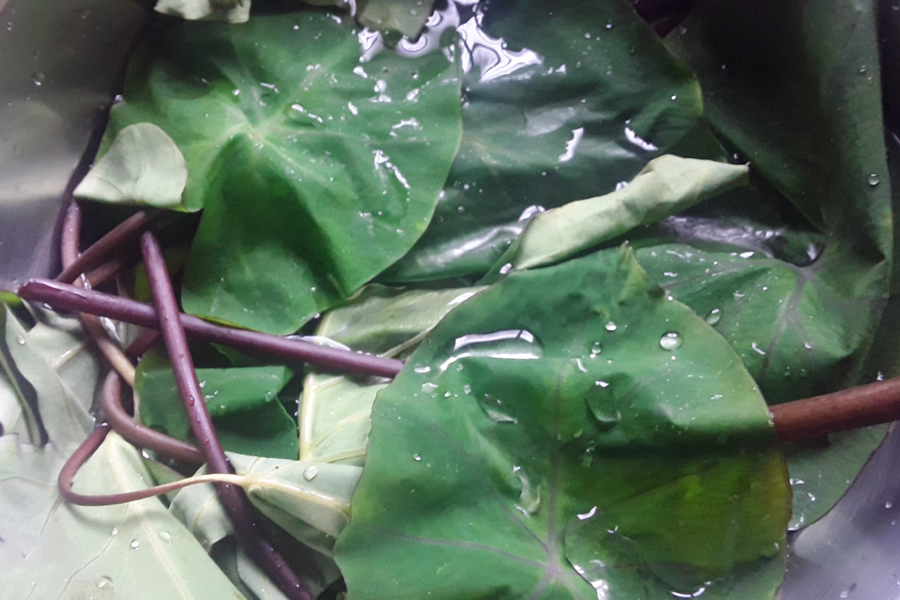
3. Chop the leaves and stem roughly.

4. Soak them in salt water for about 20 minutes. (Optional) This is to remove itchiness from colocasia, if any.
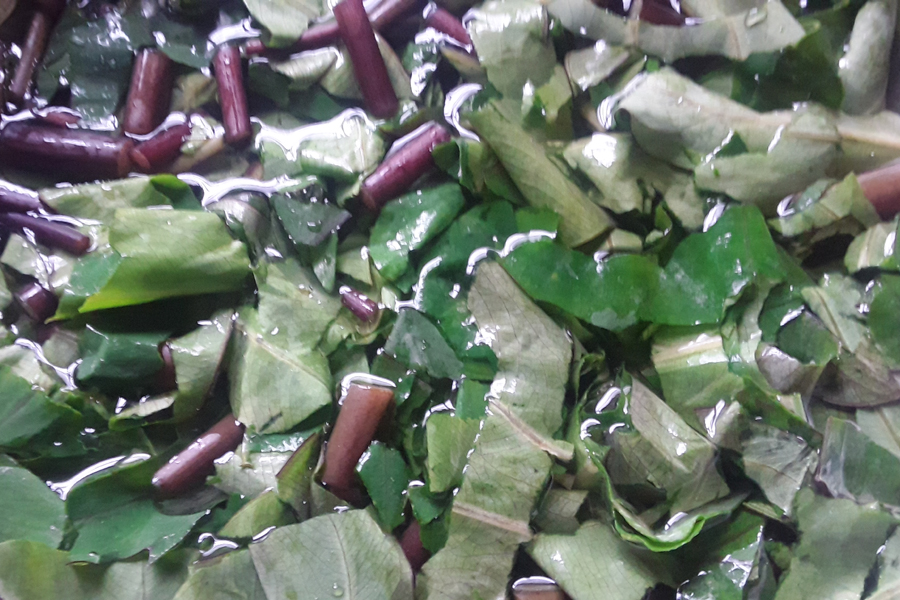
5. Take chopped leaves in a cooking bowl / pan. Add tamarind, and salt as required.
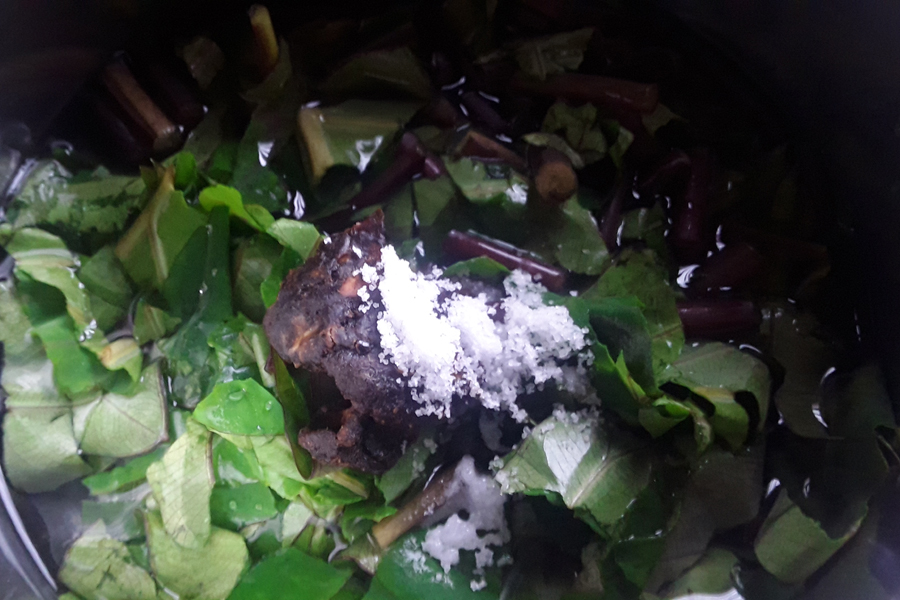
6. Add a cup of water or as required. Cook them. Let it cool.

7. Now take cooked colocasia in a mixer jar. Wash and add tiny / green chillies. Peel garlic cloves, wash and add.

8. Grind them into smooth paste. Cover and keep aside.
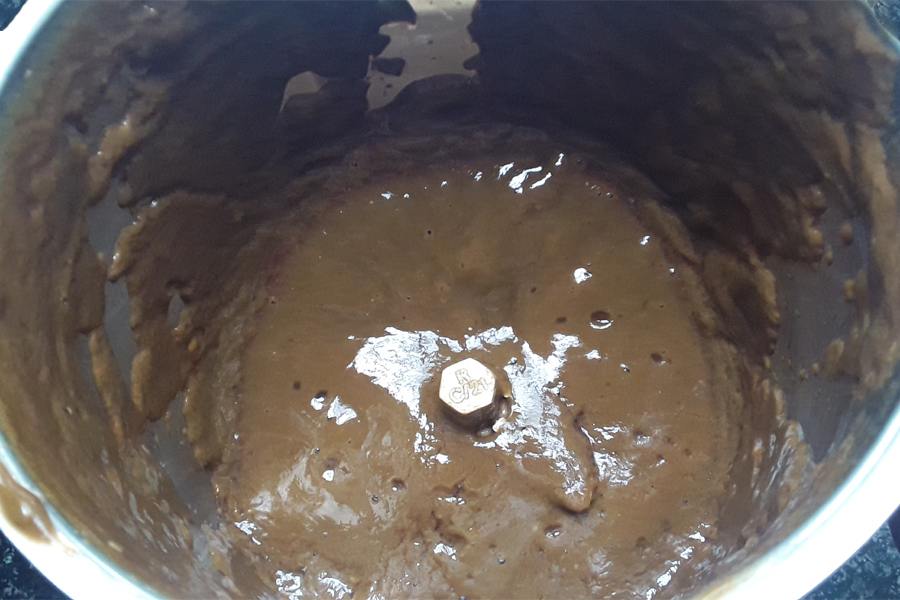
9. Heat 1 – 1.5 tablespoons of oil in a pan. Add 1 teaspoon mustard. Let them splutter. Then add curry leaves, and a pinch of turmeric powder.

10. Add ground colocasia mix. Mix well and boil it on medium heat until the mix turns little thick.
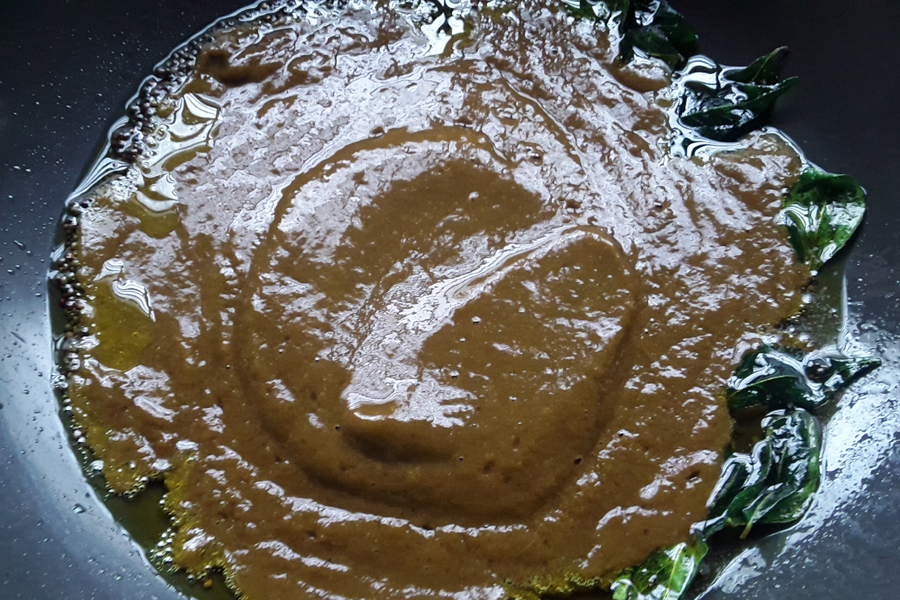
11. Switch off and relish hot with hot rice.

Notes
-
Use fresh colocasia leaves, and wash them thoroughly. If you like you can even soak them in salt water as I did.
- Use colocasia leaves along with their stems. Wild colocasia stems are commonly dark purple or green in colour.
- In traditional cooking, tiny chillies (similar to bird eye chillies) are used. If you have no access to the same, normal green chillies can be used.
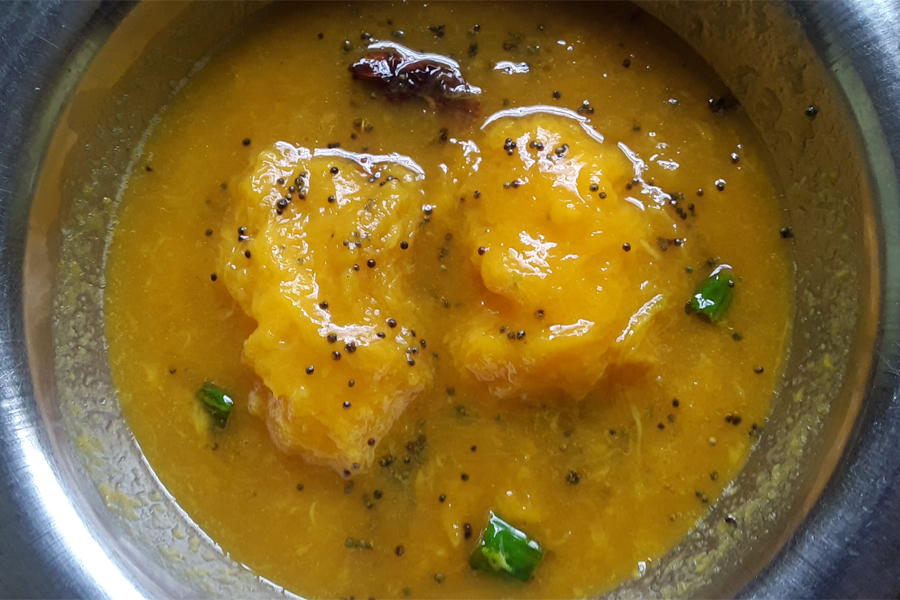
Neergojju | Sweet-sour-spicy mango pulp

Kesavina karkali | Colocasia or taro relish
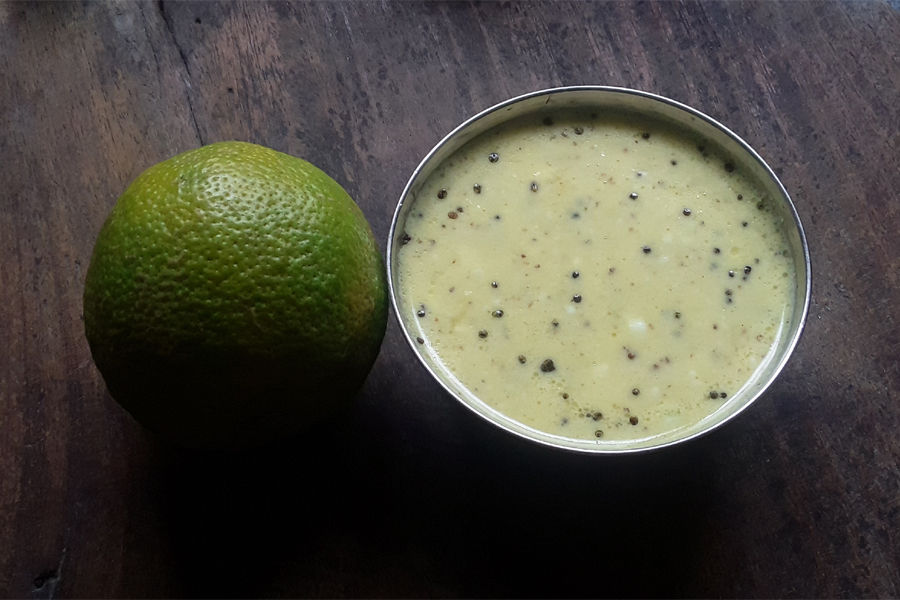
Nimbe hannina sasime | Lemon sasime
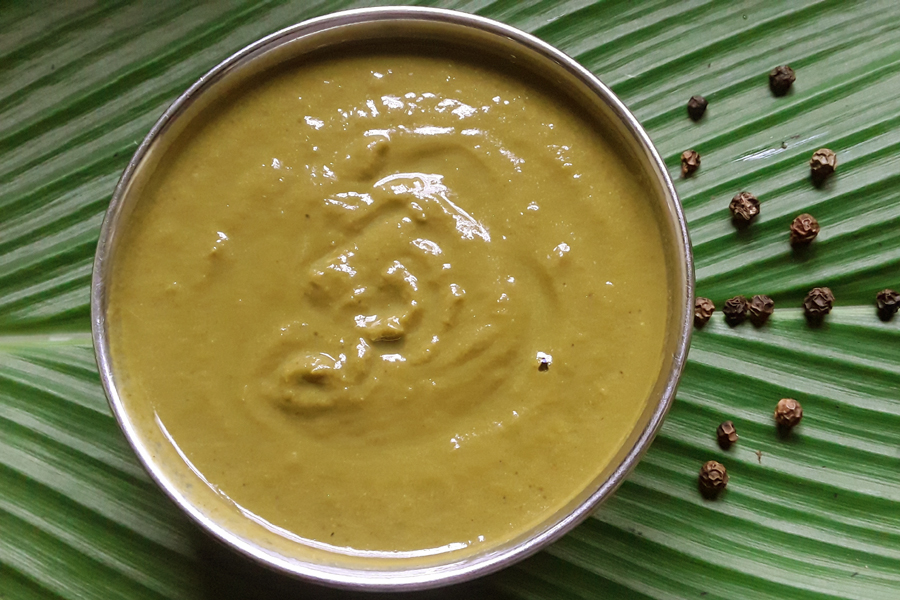
Kannekudi katne or karkali | Kannekudi relish

Maavinakaayi appehuli | Raw boiled mango appehuli

Savatekaayi hashi | Cucumber raita

Maavinakaayi tambli | Raw mango tambli

Tove or Tovve | Dal

Shunthi tambli | Ginger tambli

Hirekaayi tambli | Ridge gourd tambli

Shiya appehuli | Sweet appehuli

Mavinakaayi marige bajji | Mango raita

Kittale sippe gojju | Orange peel relish

Hasi appehuli | Raw mango appehuli

Balekayi palya | Raw banana curry

Mavina hannina sasime | Mango sasime

Haagal kaayi hulimelara | Bitter gourd curry

Batate or Aloo hashi | Potato raita

Haagalkaayi hashi | Bitter gourd raita

Dappa appehuli | Raw mango gravy

Jackfruit Huli | Lentil-jackfruit stew
